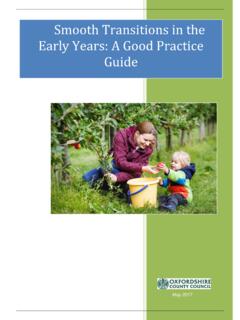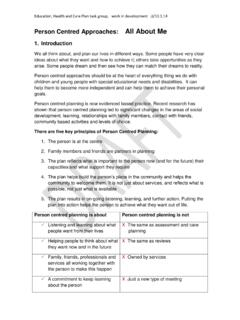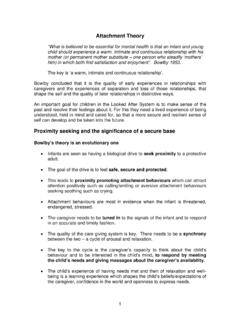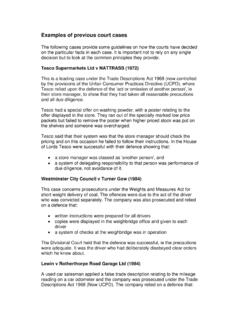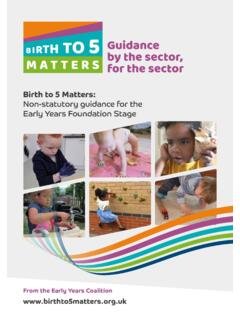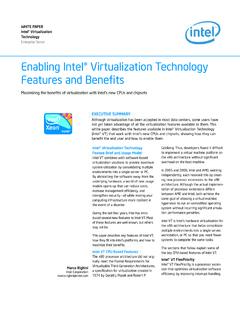Transcription of Sour ces of fur ther inf or mation space
1 SpaceMyMyCreating enabling environments for young childrenDESIGNEDBYPEARTREEDESIGN08458382 898 Copyright2008 AllRightsReservedSources of further informationAll of Us Inclusion checklist for Children s through Lighthouse for are indebted to Claire White (Headteacher of Lydalls NurserySchool) for sharing her extensive knowledge and expertise in writingthis booklet and overseeing the My space also to the following settings for allowing us to document their practice:Abi Wedmore ChildminderAll Saints Primary School Foundation Stage UnitComper Foundation Stage SchoolLydalls Nursery SchoolShepherd s Hill Pre-School and Windale Foundation Stage UnitThe Slade Day NurseryWheatley NurserySchoolContentsForeword3 Introduction4 Principles6 The Emotional Environment8 The Indoor Environment16 The Outdoor Environment24 Conclusion34 Sources of further informationBackCoverAcknowledgementsBack CoverTime to Play in early Childhood EducationBruce T London, Hodder and Stoughton (2001)The Great OutdoorsEdgington M British Association forEarly Childhood Education (2002)Starting from the ChildFisher J Open University Press (1996)Learning through PlayBruce T Hodder and Stoughton(2005)
2 Exercising Muscles and MindsOuvry M National Children s Bureau (2005)Bibliography/Recommended readingPlayworkDavy A Thomson Learning (2001)Listening to Young Children, The Mosaic ApproachClark A and Moss P NationalChildren s Bureau (2003) early Childhood Environment Rating ScalesHarms T, Clifford R M, Cryer D Teachers College Press (1997)ANurturing Environment for Childrenup to ThreeHope S and Hertzberg E IslingtonBorough Council (2007)3It encourages self-evaluation with astrong emphasis on consideration of the child s booklet is accompanied by a CDRom, which contains video clips filmedin Oxfordshire settings. The very usefuldownloadable audit and planning sheets can be used as an invaluabledevelopment SlatterQuality Workforce Development Manager, early Learning and ChildcareForewordOne of these principles is EnablingEnvironments.
3 My space offers supportand inspiration to help practitioners putthis principle into practice. This booklet considers the environmentunder 3 separate headings:The Emotional EnvironmentThe Indoor EnvironmentThe Outdoor early Years Foundation Stage (EYFS) is mandatory for all schools and earlyyears providers in Ofsted registered settings, for children from birth to age order to develop provision the early Years Foundation Stage documentationlists a wide range of statutory requirements and guiding principles. IntroductionBy starting from a child sperspective it aims to help practitioners to look beyondthestatutory brief of the McMillan, pioneer of theBritish nursery school saidWe are trying to create anenvironment whereeducationwill be almost Reggio approach recognises theenvironment as a third teacher (parents and carers being the first two.)
4 These values are embedded in the early Years Foundation Stage and arerepresented under the guiding principleof enabling Environments. My space is a self-evaluation anddevelopment resource organised underthree headings: the emotionalenvironment,the indoor environmentand the outdoor supports settings to create effectivechild-centred environments whetherthey are homes, schools, pre-schools or starting from a child s perspective it aims to help practitioners to lookbeyond the statutorybrief of the EYFSin order to gain an insight into theexperience young children have whenthey attend impact of children s surroundings on their development is Froebel ( early 1800s) compared designing an environment for childrento planning an organic and ever-changing garden which can inspire and guidechildren s imagination and 5 Sometimes very small changes can have a huge impact on children sexperiences and the practitioner s jobsatisfaction.
5 If there is a goodunderstanding of how you would like things to be it is easier to plan steps to achieving your each area there are questions toestablish the child s perspective. Theseare followed by points to consider andpractical suggestions for Montessori said Adults admire theirenvironment; they canremember it and think aboutit but a child absorbs it. The things he sees are notjust remembered; they formpart of his soul. He incarnatesin himself all in the worldabout him that his eyes seeand his ears hear. PrinciplesThrough ongoing observations you will learnnot only what the children are learning butalso how they learn as following points apply to all aspectsof the environment: Pace is all important in children slearning.
6 If you observe young childrenyou will see how important repetitionis. Scientific research confirms theneed to repeat experiences tostrengthen connections in the brain. Children need permission and theopportunity to explore, observe, take part in and recreate experiences;adding, changing or combiningresources as they want. Plan activities which can be exploredover a period of time. Make sure that the experiences andactivities you offer focus on processover product. The thought processesin an activity arefar moreimportantthan an end product that is attractiveto adults. Provide young children with experiencessuch as heuristic play,with interestingobjects to explore in their own waywithout adult interruption. Consider the resources you will needin order to meet children s specialneeds.
7 Do your resources reflectequality and diversity?6 Fostering enabling environmentsIn order for any early years environment to be enabling , it is essential that allstaff understand how children learn and the value of play and children key principle is that of observation. Through ongoingobservations you will learn not only what the children are learning but also how they learn as sure that the experiencesand activities you offer focuson process over product. The thought processes in anactivity are far moreimportant than an endproduct that is attractive to adults. Are there enough resources to goround, particularly for very youngchildren who are still developing theability to share? How do you provide for solitary play? Does the way your timetable isorganised provide opportunities forchildren to return to their activitiesthroughout the day without having totidy up repeatedly?
8 Time needs to beset aside at the end of the day foreveryone to tidy up, but it should notbe necessary to clear everything awayat mid day. Doyou support schemas such astransporting, connection, enveloping,scattering and positioning? The Emotional EnvironmentBabies and young children are veryperceptive and aware of the feelings and atmosphere around does it mean?The emotional environment refers to the whole mood or atmosphere of asetting, how it feels. Relationships are what constitute the emotionalenvironment. This includes how people behave, speak to each other and aretreated and how inclusive it is. Babies and young children arevery perceptive and aware ofthe feelings and atmospherearound them. Relationshipsbetween adults and children,between adults and otheradults and between childrenthemselves all have animportant role to play in developing the young child ssense of self and theirunderstanding of how to interact with to three supporting our youngestchildren.
9 Learning and teachingScotland Emotional EnvironmentDo you know me, my family and mycircumstances? Arrange home visits or pre-starting interviews Use an about me sheet to find out aboutthe child Develop ways of sharing information with all staffWho will I meet hereand how do I know whois special to me? Offer open visiting Stagger children s starting dates Develop your key person approach Buddy staff to ensure continuity of supply cover Have a daily photo display of staff present Observe regularly to inform your practiceHow am I welcomed?Whatis the atmosphere like?Does it feel right? Ensure each child is warmly welcomed by name Encourage parents to stay and play Have an unhurried regular routine that children understand Smile! Observe from a child s point of view to get a pictureof their experienceHow do peoplebehave here?
10 Develop a clear behaviour policy Involve adults and children in the development of it Ensureeveryone understands and adheres to it Ensure adults are positive role models Promote consideration as a key value Encourage young children s ability to empathiseQuestions from the childIn response could you?The Emotional Environment11 The Emotional EnvironmentHow do you help me tobecome more confidentand independent? Plan your environment so that children canaccess resources independently Plan the timetable so that there are notunnecessarybreaks in the day Keep focus activities for several days or even weeks Allow children to repeat activities and pursueinterests in depth Allow children to choose where they play and who with Encourage children s independence, this maymean slowing down the pace of your dayDo you know about and understand myparticular needs and can you meet them?
